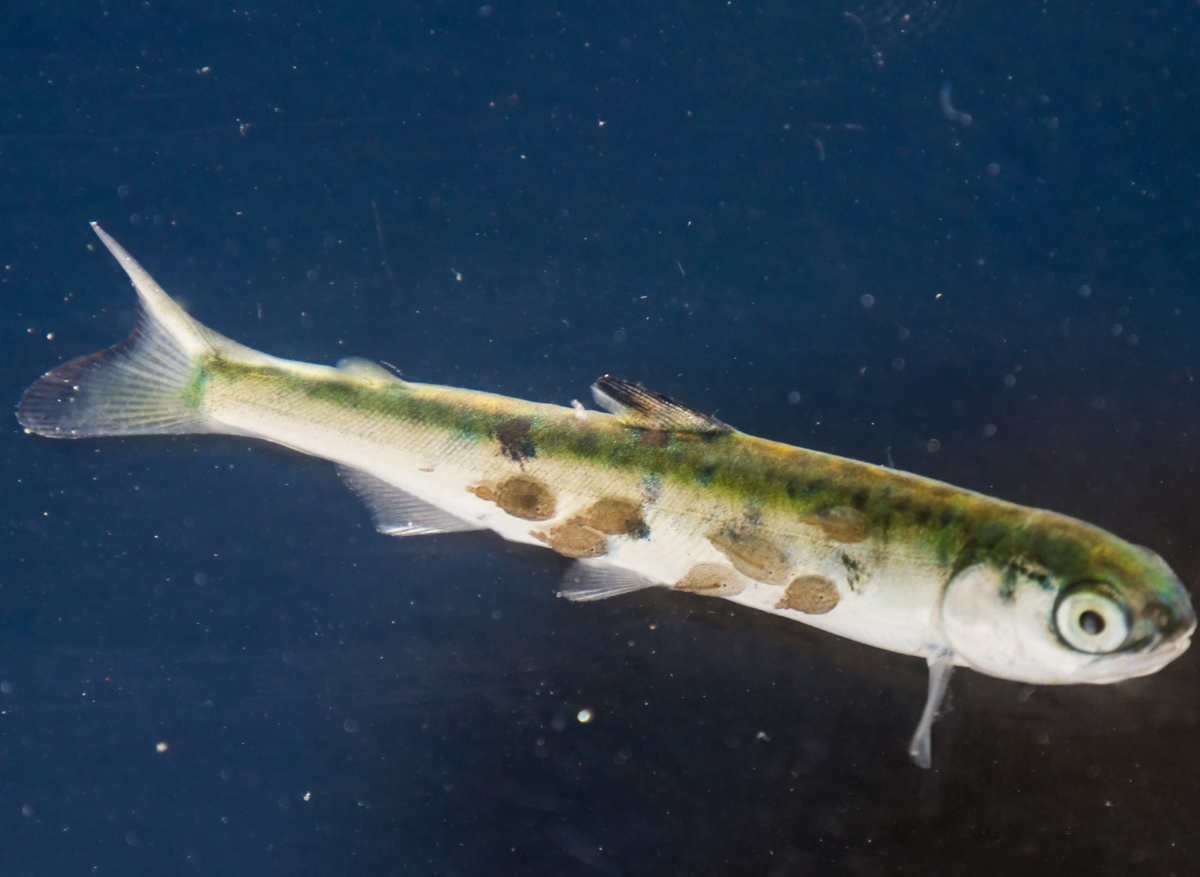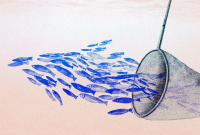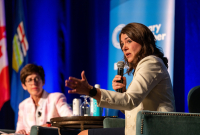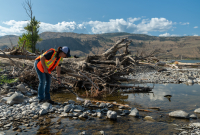Thank you for helping us meet our fundraising goal!
New federal rules for fish farms tackle the amount of allowable sea lice in farmed salmon — specifically, they allow one-fifth of a sea louse per fish less than the rules previously allowed.
That, say environmental groups, doesn’t add up to much.
A coalition of environmental groups is urging Fisheries Minister Diane Lebouthillier to strengthen those conditions under the new licensing agreements that will last until the end of this decade.
Sea lice have been one of the major focal points of resistance to salmon farming over the years, because the harmful parasites thrive in close quarters and can spread to wild populations that pass nearby.
Previous marine finfish aquaculture licences expired on June 30 and have been renewed with a five-year agreement under the Fisheries Act effective July 1. In a press release on June 19, Fisheries and Oceans Canada (DFO) announced a pivot from the original plan to transition out of open-net salmon farming by 2025, instead opting for a "responsible, realistic and achievable transition" from ocean farming by 2029.
News that the salmon farms’ licences would be extended disappointed marine environmental groups, scientists and conservationists — but one promised condition in particular gave them some hope: the promise of more restrictions on sea lice.
“That gave a lot of us in the conservation community hope. And I think that's one of the reasons why we didn't come out as hard as we would have otherwise against the delay of the transition,” said Kilian Stehfest, marine biologist and marine conservation specialist with the David Suzuki Foundation.
“But then a few days later, …we see what they called stricter conditions is actually just lowering the sea lice threshold by 0.2 of a louse, which is completely meaningless,” Stehfest said.
It felt like a complete departure from what was said by the minister at the press conference, Stehfest adds.
The David Suzuki Foundation, Living Oceans Society, Watershed Watch Salmon Society, Georgia Straight Alliance and Clayoquot Action sent a joint letter to the minister, asking her to reconsider the sea lice threshold as the change will do very little to reduce the risk to wild salmon. Canada’s National Observer has obtained a copy of the letter.
The groups have not received a response, and the new agreement has not been published publicly, despite being in effect. The David Suzuki Foundation obtained the record from the DFO officials.
Under the new licensing agreement, licence holders must adhere to a sea lice threshold of an average of 2.8 motile (capable of moving) sea lice per farmed fish. That’s applicable starting in 2025, down from three allowable lice in the previous agreement. It will drop further to a threshold of 2.4 in 2026.
Stehfest believes a more reasonable number would be less than one.
The Ahousaht First Nation’s requirement of 1.5 average sea lice per fish, half of what DFO has previously allowed, is in effect February through July when salmon migrate from the rivers back to the ocean.
Sea lice are naturally occurring, but pose a significant threat to the development of juvenile salmon, causing them to grow more slowly, affect how much they are able to compete for food and make them more likely to be eaten by predators, explains Sean Godwin, professor at the University of California Davis who has done extensive research on sea lice effect on salmon in B.C.
In natural systems, wild juvenile salmon wouldn’t come into contact with wild adult salmon, because of differences in their migrations — so there would be less opportunity to spread the sea lice between juveniles and adults, Godwin explains.
“Wild juvenile salmon in the absence of salmon farms don't typically get many sea lice on them,” Godwin said.
Salmon farms break that separation. Now, sea lice can transfer from wild salmon to salmon farms, proliferate over the winter and transfer back to wild juvenile salmon in the spring.
Proliferation of sea lice has been exacerbated further by climate change. Godwin says as ocean temperatures rise, the frequency and severity of outbreaks are going to get worse because sea lice reproduction is heavily dependent on temperature.
DFO published a heavily criticized report on the topic in January of last year. The report concluded there is no statistically significant association observed between infestations attributed to salmon farms and the probability of sea lice infestations on wild juvenile salmon. Independent scientists were shocked.
Godwin and a group of 15 other academic scientists with 1,500 combined peer-reviewed published articles, sent a letter to the minister advising that the report “falls far short of the standards of credible independent peer review and publishable science.”
Their concerns included inappropriate statistical analysis, selective reporting methods, contributors to the report consisting mainly of DFO staff with a mandate to support aquaculture development and more.
“The science was so poor, if one of my grad students had submitted that as a piece of work, I would have told them to go back to the drawing board,” Stehfest said.
“They just haven't really done the proper scientific assessment of the risk of sea lice transmission from farm to wild fish. And it's hard not to feel like they haven't done that because they don't want to know.”
DFO says its report was the result of a national peer-review process.
The DFO has also faced criticism for what’s seen as an inherent conflict of interest to both manage aquaculture and protect the marine environment.
“There's been this dual mandate that DFO has about safeguarding wild salmon and promoting and developing the salmon farming industry,” Godwin said.
“So if there's any effects of the salmon from industry on wild salmon, there's conflict there, and over time it's become more clear that the need to suppress information and research … that might show those effects [have] become more prevalent to make the regulation of that easier.”
In an email statement to Canada's National Observer, DFO reiterated the fish farms will eventually be completely shuttered, and says measures are in place to monitor and treat sea lice.
"As part of their conditions of licence, all Atlantic salmon aquaculture facilities must report all sea lice treatments to DFO and are required to submit sea lice numbers before and after treatments. This data informs DFO on the success or efficacy of the treatment. Sea lice treatments include: in-feed drug emmamectin benzoate (aka SLICE), pesticide (hydrogen peroxide), freshwater baths, and mechanical removal (hydrolicer). Active harvest is another method to reduce sea lice, without the use of therapeutants," writes a DFO spokesperson.
Stehfest remains hopeful the minister will amend the new licence agreement, but says it may take public pressure.
“It hasn't really reached the general public yet that [it] was kind of a smokescreen for very weak conditions of licence. So I think once there's a public pressure, the chances of them maybe adjusting are hopefully quite high,” said Stehfest.
Canada’s National Observer reached out to DFO and the minister for a comment but did not receive a response before publication time.






Comments
Most of us are too busy waxing indignant or fearful over Trump's plans, or PP's wild accusations to have much time left over for the salmon. Pity.
Actually there's NO EXCUSE to ignore this!!! Anyone who loves fish for dinner MUST pay attention to yet another federal government cover up! It's very plain to see the parallels with this issue and the many others, like for example toxic substance regulation, where the feds are obviously fiercely lobbied by industry insiders.